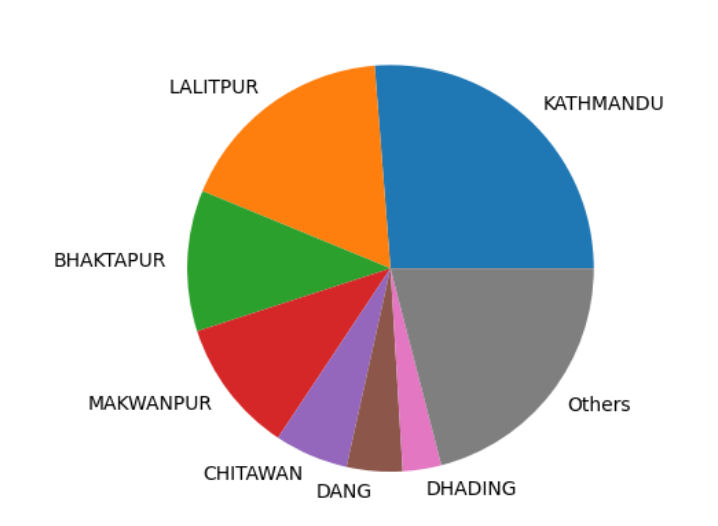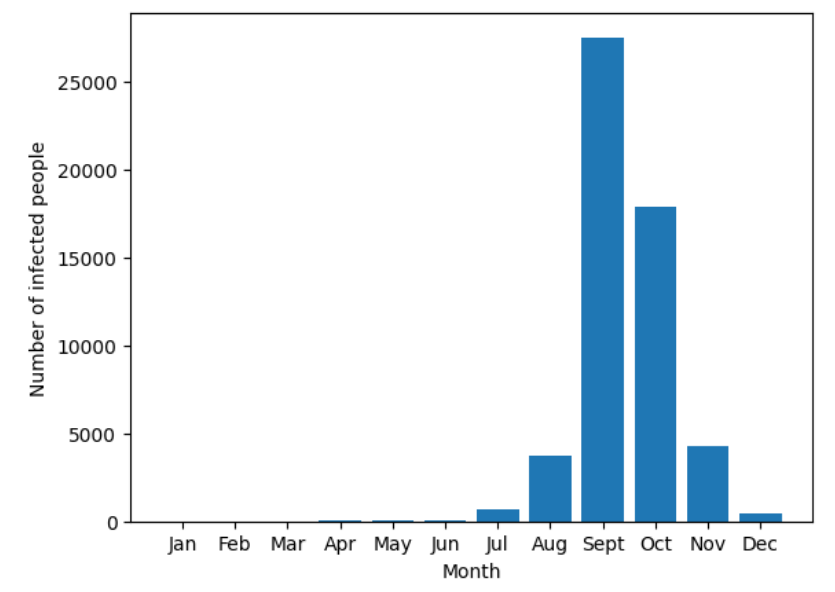Data Analysis and Manipulation of Dengue outbreak in Nepal in 2022 using Pandas
Dengue outbreak in Nepal in 2022 was really frightening. A lot of people were infected. That includes my friends and Neighbours as well. In this blog we will analyze the dengue outbreak zones, most infected zones, most infected months and try to find the cause of the outbreak.
Brief Background about Dengue
Dengue is a disease caused by bite of infected Aedes mosquitoes. Common symptoms of Dengue can be mild-severe fever, severe headache, joint and muscle pain, vomiting, skin rash etc. Dengue transmitting Aedes mosquitoes breed on stagnant water. So, we should remove stagnant water around the Neighbour and keep surrounding clean to prevent such diseases.
Data source
The source of data for this project is taken form Government of Nepal, Ministry of Health and Population, Department of Health Services, Epidemiology and Disease Control Division.
Analysis based on District
According to the provided data, all the 76 district of Nepal has reported the Dengue infection reports. However, we will analyze the central point of the outbreak.
It is clear from above chart that highest number of Dengue infection zone is Kathmandu(the capital) followed by Lalitpur, Bhaktapur, Makwanpur, Chitwan, Dang, Dhading. It can be roughly assumed that the outbreak zone was probably Kathmandu. Following highest infected Districts i.e Bhaktapur and Lalitpur which are Neighbour District of Kathmandu.
Analysis Based on Month
Well, above bar chart is quite clear explaining the outbreak months in 2022. This chart shows the number of infected people according to the month in all 76 District. September and October were the month that had highest infected numbers.
The rainy season in Nepal generally lasts from June to September and heaviest rain fall in June and August. Possible reason of outbreak may be stagnant water due to the rainfall and negligence of people to clean such water accumulations in Neighborhood.
Geographical Analysis
Well, it's quite clear that the outbreak zone was Kathmandu. This can be seen through the geographical map aswell.
Map data(latitude and longitude of Districts) are taken from New chat (openai.com)
Among the highest infection reported places, most of them are from Provience 3 (Bagmati), where the capital Kathmandu lies.
Conclusion
Hence, we should take care of our surroundings and Neighborhood and keep it clean to prevent such outbreaks.
Code for above analysis
Do leave a star if you find it helpful😊





Comments
Post a Comment